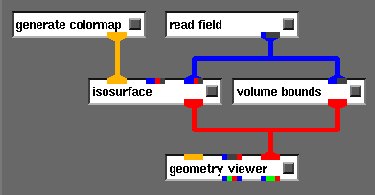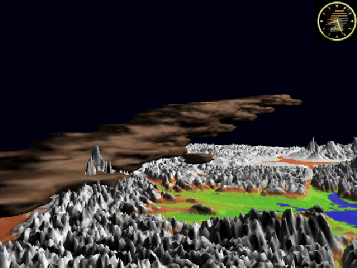
Figure 2: AVS network to generate plume isosurface.
The ash cloud is rendered as an isosurface with a brown color approximating volcanic ash. The rendering obtained through this technique gives the viewer a visual effect showing the boundaries of the ash cloud. Details of the cloud shape are highlighted through lighting effects and, when viewed on a computer workstation, the resulting geometry can be manipulated interactively to view the ash cloud from any desired direction.

Figure 2: AVS network to generate plume isosurface.
At any point in time, the particle densities in the ash cloud are represented by the values in a 150x150x50 element integer array. The limits of the cloud may be observed using the isosurface module in the AVS network shown in Figure 2 with the isosurface level set equal to 1.

Figure 3: Ash cloud visualized as an isosurface.
As the cloud disperses, the particle concentrations in the array decrease and holes and isolated cells begin to appear in the isosurface around the edges of the plume where the density is between zero and one particle. These effects are especially noticeable in a time animation of the plume evolution. To create a more uniform cloud for the video animation, without increasing the overall particle counts, the density array was low pass filtered by an inverse square kernel before creating the isosurface. An example of a filtered plume created by this technique is shown in Figure 3.